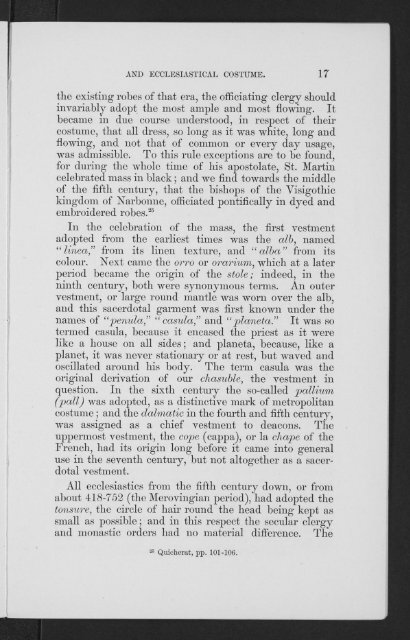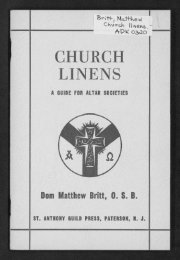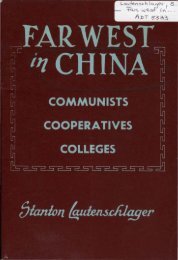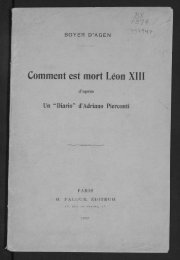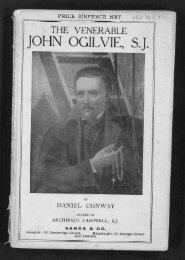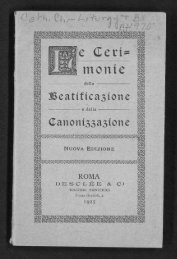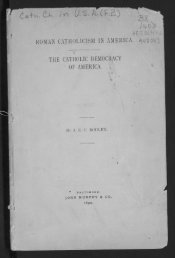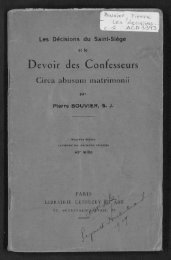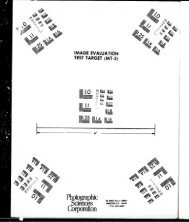MONASTIC AND ECCLESIASTICAL. COSTUME.
MONASTIC AND ECCLESIASTICAL. COSTUME.
MONASTIC AND ECCLESIASTICAL. COSTUME.
Create successful ePaper yourself
Turn your PDF publications into a flip-book with our unique Google optimized e-Paper software.
<strong>AND</strong> <strong>ECCLESIASTICAL</strong> <strong>COSTUME</strong>. 17<br />
the existing robes of that era, the officiating clergy should<br />
invariably adopt the most ample and most flowing. It<br />
became in due course understood, in respect of their<br />
costume, that all dress, so long as it was white, long and<br />
flowing, and not that of common or every day usage,<br />
was admissible. To this ride exceptions are to be found,<br />
for during the whole time of his apostolate, St. Martin<br />
celebrated mass in black; and we find towards the middle<br />
of the fifth century, that the bishops of the Visigothic<br />
kingdom of Narbonne, officiated pontifically in dyed and<br />
embroidered robes. 26<br />
In the celebration of the mass, the first vestment<br />
adopted from the earliest times was the alb, named<br />
" linea," from its linen texture, and " alba" from its<br />
colour. Next came the orro or ovarium, which at a later<br />
period became the origin of the stole; indeed, in the<br />
ninth century, both were synonymous terms. An outer<br />
vestment, or large round mantle was worn over the alb,<br />
and this sacerdotal garment was first known under the<br />
names of "penula," " casula," and "planeta." It was so<br />
termed casula, because it encased the priest as it were<br />
like a house on all sides; and planeta, because, like a<br />
planet, it was never stationary or at rest, but waved and<br />
oscillated around his body. The term casula was the<br />
original derivation of our chasuble, the vestment in<br />
question. In the sixth century the so-called pallium<br />
(pall) was adopted, as a distinctive mark of metropolitan<br />
costume; and the dalmatic in the fourth and fifth century,<br />
was assigned as a chief vestment to deacons. The<br />
uppermost vestment, the cope (cappa), or la chape of the<br />
French, had its origin long before it came into general<br />
use in the seventh century, but not altogether as a sacerdotal<br />
vestment.<br />
All ecclesiastics from the fifth century down, or from<br />
about 418-752 (the Merovingian period), had adopted the<br />
tonsure, the circle of hair round the head being kept as<br />
small as possible; and in this respect the secular clergy<br />
and monastic orders had no material difference. The<br />
28 Quicherat, pp. 101-106.


